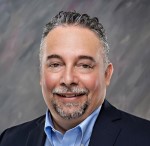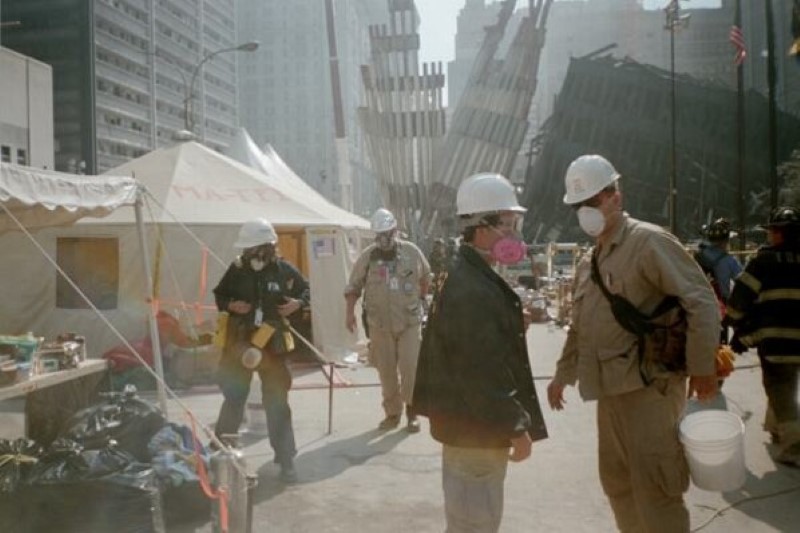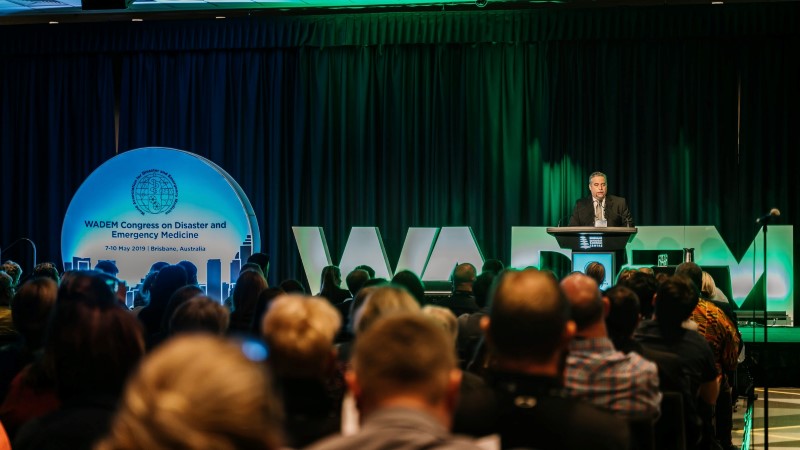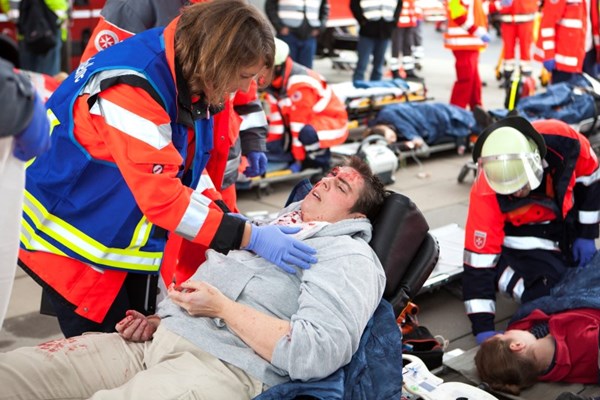A Q&A With Dr. Gregory Ciottone
“Jack of all trades, master of none — but oftentimes better than master of one.” Perhaps this familiar quotation is especially accurate when applied to emergency physicians. EM training provides a unique “generalist” skill set that spans the breadth of medicine and beyond. Who’s at the frontlines of an aviation accident, a mass casualty incident, or a natural disaster? The foundation of knowledge established during an EM residency provides EM-trained physicians with the mindset to address any urgent and emergent medical issues. Some choose to further hone their skills in large-incident and disaster management by pursuing advanced training in disaster medicine (DM).
The 2009 United Nations International Strategy for Disaster Reduction (UNISDR)1 defines “disaster” as any event causing significant disturbance to a community or country in which there are widespread health consequences and infrastructure damages, large enough to overwhelm local resources available to manage the incident. Such disasters can be natural (e.g., weather-related events) and man-made (e.g., terrorist attacks).
Since the turn of the century, large-scale disasters have included 9/11, Hurricane Katrina, the Haiti earthquake, Hurricane Sandy, the Ebola virus epidemic, the Nepal earthquake, California wildfires, and the COVID-19 pandemic, among others. Management of such incidents requires collaboration among multiple agencies, first responders, local, state, and sometimes federal assets, and ultimately medical care providers responsible for treating the injured. A disaster medicine physician provides essential, life-saving expertise by speaking the language of emergency managers and the medical community.2
As the COVID-19 pandemic and other disasters have shown, there is room for improvement in how large-scale disaster response is managed. Emergency physicians have the skills to take lead on tackling these issues — and with more than a dozen established disaster medicine and combined EMS/DM fellowships across the country,3 training opportunities abound. Furthermore, to formalize the recognition of disaster medicine as a unique subspecialty, a push for ABMS/ABEM board certification is underway through ACEP’s disaster medicine section.
We interviewed Gregory Ciottone, MD, a leader in disaster medicine and president of the World Association for Disaster and Emergency Medicine (WADEM). Dr. Ciottone is also a founding director of the Beth Israel Deaconess Medical Center (BIDMC) Fellowship in Disaster Medicine and an associate professor of emergency medicine at Harvard Medical School. He gave us his thoughts about DM’s past, present, and future.
Tell us about your background. How did you get into disaster medicine?
Dr. Ciottone: I’m an emergency physician by training. I trained at the University of Massachusetts after medical school there and graduated from its EM residency program in 1994. I stayed on the faculty at UMass for about 6 years and then came to BIDMC and Harvard Medical School. I have now been here for about 22 years.

Gregory Ciottone, MD
My career and interest in DM were really fostered almost accidentally. When I was a chief resident, shortly after the dissolution of the Soviet Union, the United States Agency for International Development (USAID) had developed a medical partnership program with former Soviet states and U.S. universities. I was lucky enough to be at UMass when we were awarded one of these partnership programs with Yerevan Armenia in the area of emergency and disaster care. The chairman at the time, Dr. Richard Aghababian — who was also president of ACEP in 1994 — led the first trip to Armenia and wanted one of the chief residents to go. I joke that the other 2 chiefs moved a step back and here I was, so I said “sure,” not really knowing anything about international work or disaster medicine. I was just trying to get myself through residency and think about what I was going to do after that.
We then went on that first trip, and I had the opportunity to develop a number of courses that were taught at that center, designed to be “train the trainers” programs. We taught courses on emergency medicine, EMS, and disaster medicine. They were very successful, to the point where USAID adopted the model for 16 training centers across the former Soviet Union. I really fell in love with the whole idea of having this ability to reach out and successfully do this important international medical work.
The other sort of lucky part of my experience was that the National Disaster Medical System’s Disaster Medical Assistance Teams (DMAT) were just getting started, with only about 15-16 Level 1 DMAT teams in the country at that time — and one of them happened to be based at UMass. So I had an opportunity to join that team (DMAT Massachusetts-2 or DMAT MA-2) initially as a team physician. Several years later, I became the commander.
During my time there as commander from 1997-2003, DMAT MA-2 was one of the first teams (along with Massachusetts-1 and Rhode Island-1) that went into ground zero on 9/11. We stayed there 2 weeks, set up 5 field hospitals, and treated about 400 patients per day.
That deployment was life-changing for me — and one that molded my career. It was right about that time that all my various career interests started to coalesce into this true, real passion for disaster medicine, both on the domestic and international fronts.

Dr. Ciottone and others at ground zero after the 9/11 terrorist attacks
How do you define disaster medicine?
Dr. Ciottone: The definition of disaster medicine is constantly evolving, but in simple terms, it is the marriage of crisis health care and emergency management. And when you bring those two things together, you get DM. It is very unique. We do not wake up and go to the disaster clinic every day and see disaster patients. When we are operational it is during a crisis, by definition, and there is chaos. As my friend Craig Fugate, former director of FEMA under the Obama Administration, likes to say, “Anytime you have to deviate from your typical organizational chart in order to complete the mission, you are in a crisis or disaster.”
Disaster medicine brings those necessary pieces together. DM becomes operational in an event where your resources are overwhelmed, delivering health care assets to situations like a mass casualty event lasting a few hours or a pandemic such as COVID-19 that lasts 2+ years. To be most effective in response, we spend the majority of our time in mitigation and preparedness.
Where do you think DM is headed, with the evolving definition?
Dr. Ciottone: Disasters are different now. The easy way to look at it (probably not the most comprehensive) is to say that disasters are increasing in frequency. We have climate-related issues. We have these pandemics. We also have changing vulnerabilities. Simply looking at population centers, like a habitation map of where people are now vs. 100 years ago, you will see that so much more of the population is living in hazardous or at-risk places now — along coasts, for example. Historically and consistently, one of the largest killers has been natural disasters. The vast majority are water- and climate-related, whether that’s flooding or cyclonic events. These shifting vulnerabilities and risks demand DM evolves with them.
How is DM evolving? If you look at Hurricane Maria (2017) and similar events, studies of Puerto Rico and the Northern Caribbean show that more people died in the months following the hurricane than in the acute phase of the disaster. Then look at the COVID-19 pandemic now, ongoing for more than 2 years and probably will go on a bit longer with different global waves, what we call arcs of time. These phases force us to pivot over time to satisfy the surge needs, with no predictive modeling to follow that is 100% accurate. I think this is where the primary evolution of DM is going to be, at least in the short term. Historically, we have paid attention almost strictly to the acute phase of disaster response, at least on the health care side. I think now we need to take a hard look at the post-acute phase as well. Now, I am not suggesting that DM should not be a subspecialty housed within EM. I think it certainly should be because there are some core skill sets, knowledge, etc., that you get from EM training. However, I do think we now need to reach across the aisle to other specialties like critical care, primary care, and some surgical specialties to get them trained in disaster medicine as well.
To that end, some years ago we started opening our fellowship to international and some select non-EM trained applicants. We have 85 alumni now, and probably 60% of them are international. You do not find emergency medicine everywhere in the world, right? So for these people, this subspecialty training prepares them for the role of DM specialist in their home countries. That’s a solid reason to expand and have other tracts into DM. Also, if we are training future DM specialists, they really need the skill sets necessary to deal with the entire disaster. I believe both the acute and post-acute phases are important; therefore, we have opened pathways to our DM fellowship training for non-EM physicians — much like the different paths to critical care or pediatric EM.
What is the training pathway for niches like counterterrorism medicine? Do fellowships offer focus areas for those interested?
Dr. Ciottone: In our fellowship, we do to a certain extent. Some fellows come in with a special interest while others do not, so it varies. We have plenty of fellows who graduate the program with no specific DM subspecialty interest, but equally we have many who do. For instance, we have had a number of fellows from the Middle East, and one of their big interests is mass gatherings around something like the Haj. We’ve had other fellows from areas prone to terrorist attacks, and the idea of counterterrorism medicine is in their interest. We also have those interested in humanitarian disaster response or disaster policy at the World Health Organization or governmental level. We take a vested interest in each fellow and tailor the program to specific needs.
There are ample DM training options — advanced degrees, FEMA courses, and of course fellowships. Is a fellowship more beneficial than, say, a master’s degree in disaster management?
Dr. Ciottone: Well, I think everybody should do a disaster medicine fellowship (says with a wink and a smile). Obviously I’m biased, but it really depends on what you’re trying to get out of it. I do think U.S.-based physicians interested in becoming specialists and leaders in the field should complete DM fellowships. There are, however, some very good masters’ programs out there. In fact, I used to teach for the European Master in Disaster Medicine (EMDM), which is a shared program between the University of Eastern Piedmont, Italy, and the Free University of Belgium — and I continue to collaborate with them. They grant a European master’s, which is a bit different from a U.S. master’s, but it’s a valuable degree depending on where you are. In some parts of the world masters’ degrees are more valuable and in other parts of the world fellowships are, and that really varies. I do not necessarily have a good handle on that, but I do not think one should be necessarily exclusive of the other. We have had a number of fellows who have also completed the EMDM.
For emergency physicians who would like to practice DM domestically and internationally, is a fellowship required, in your opinion, to be successful?
Dr. Ciottone: So that is a two-part question… Do I think a fellowship is required to gather all the skills needed to become a DM specialist? Yes, I do. We have a year-long program, and the curriculum barely fits into that time. My textbook has approximately 200 chapters, which is around 1,000 pages. There is a lot to know in disaster medicine. The breadth of information — from emergency management to specific events like pandemics, mass casualty incidents, chemical/biological/radiation, and everything in between — is vast. There is a lot of information to master. So, do I think fellowship training is needed for developing that knowledge base and skill set to be a specialist and leader in the field? Yes.
Is a fellowship required to practice within disaster medicine? No, not necessarily.
As you know, there is no ACGME certification for DM right now. Some are working with SAEM and ACEP toward that potential goal. There is also no board certification, but again, we do not wake up and go to a disaster clinic every day and see disaster patients, so the reality is DM is probably always going to be a secondary specialty for all health care providers, and that is why I mentor and teach plenty of medical students. When a medical student comes to me and asks, “What do I have to do to be a disaster medicine specialist or follow in your career path?” I say what you need to do is first graduate medical school and learn medicine. That is the most important thing — No. 1, become a doctor. After that, or sometime concurrent to that in residency, start looking at DM. But you need to be a doctor first. You need to learn how to be a good physician, and then we will talk about disaster medicine. I say this because I really cannot think of many scenarios, outside of education and policy, where disaster medicine is your only career. However, because local disaster response is critical in the early days of any event, DM should be a secondary specialty for everybody in health care, with the caveat that there will be a growing need for DM specialists to lead through the mitigation, preparedness, response, and recovery phases.

Dr. Ciottone speaks to an audience at the WADEM Congress on Disaster and Emergency Medicine in Brisbane, Australia, in 2019
Describe the lifestyle for a DM specialist — amount of time spent in the field vs. clinical work, for example.
Dr. Ciottone: Well, I am more than 30 years out, so I am currently more into education, training, and research, and my work with WADEM, etc. But I spent more than 25 years as a full-time clinical emergency physician and doing disaster medicine along with it. Back in my earlier days, when I was on the DMAT and doing other things, I was very active in the field, with a lot of work overseas. I remember, the first 10 years out of residency, when I was working on average 3 months a year overseas, there were few opportunities to get funding, so I stacked my shifts and worked hard clinically before and after deployments. I think it’s a little easier now to find ways to be funded in DM because of more interest. Whether stemming from 9/11, recent terrorist attacks, natural disasters, or the pandemic, there is a lot of interest now from outside DM to work on funded projects. So, there are more opportunities now to get into a good situation where you can mix your career with some clinical, some academic, and some actual DM operations in a way that does not overwhelm you workwise or financially.
During your career, how did you land opportunities like working with the White House Medical Unit and DMAT?
Dr. Ciottone: You’ve just got to be a really cool guy (laughs)! Honestly, I could not even tell you how I stumbled into all those opportunities. The world of DM is not that big, and as you start doing more and more, you start rubbing elbows with others and here you are. I’ve had the privilege of practicing disaster medicine pre- and post-9/11, and I remember distinctly talking in the 90s about preparedness and sounding like chicken little saying the sky is falling. But then on 9/11 the sky did fall, and suddenly all this attention came and everyone started paying more attention to disaster medicine. Since, there have been a number of large-scale natural disasters and other events.
What’s the career outlook for DM specialists?
Dr. Ciottone: The nature of disaster medicine is we have to prepare for these low-frequency, high-acuity disasters. We just have to. And again, historically it was hard to convince people of that. And now it is getting a little easier to convince others that we need to prepare on a sunny day for a rainy day. So, there are going to be more and more opportunities for disaster medicine specialists going forward.
What skills are ideal for U.S.-trained and -based DM specialists who want to assist in an international response? Is there an overlap with global health?
Dr. Ciottone: In my opinion, there is an overlap with global health in the sense that you do practice in austere conditions, but it is also quite different. One is not more important than the other; they are both equally important. But international disaster response is not something you want to walk out the door toward with really nothing by way of training or understanding the bigger picture. It is not only the austere conditions that are of concern, but that where you deploy is also in crisis. For this reason, it is essential to understand the basic principles of disaster medicine if you plan to deploy to such events, and it is imperative that DM fellowship programs teach the safe and effective way to deploy into disaster zones.
In our fellowship, for instance, we do deploy our fellows to some disasters that fit our criteria of safety first and the doable logistics that are needed to be effective. We do not deploy them to every disaster, but we do deploy our fellows with some NGO partners to certain disasters. However, we do not deploy fellows without first putting them through a pre-deployment course that we have created within the fellowship. It is a 4-day course where fellows and faculty sleep in tents, and we teach everything from A to Z about being safe in an austere environment, emergency management, practicing field medicine, working with the United Nations, etc. So, we really put them through a disaster-zone simulation before we deem them deployable. And yes, we do have specific training in cultural awareness as well.
Does your program offer electives for medical students or residents?
Dr. Ciottone: We do, and I think some other fellowship programs have opportunities for medical student electives as well. At Harvard Medical School, we also have a DM special interest group that we advise. We meet once a month with them to talk about general DM topics.
What has been the most fulfilling part of your career?
Dr. Ciottone: Well, I think the point we are at now in the BIDMC Fellowship in Disaster Medicine — 15 years old with 85+ alumni around the world, and watching all the great things the alumni are doing — is extremely rewarding. You would be hard-pressed to find a large-scale natural or man-made disaster and not have at least one of our alumni involved, typically in some sort of leadership role. Honestly, it’s like parents raising their children and being so excited about what everybody is doing. That is probably one of the most fulfilling parts of my career today.
The other is practicing disaster medicine in general. As emergency physicians, we are doing really great things with individual lives, truly saving people's lives by intervening in crisis situations for individual patients. You do a lot of good for that patient, and then you go on to the next patient, and it is a great thing, a great calling. I have really enjoyed being an emergency physician, but my career in DM is a bit different. As a DM specialist, you are doing that same sort of intervention, and even more on the mitigation and preparedness side, but to populations, to communities, to large groups of people. The train-the-trainers program I mentioned earlier, well, some of those centers are still in operation and have trained well over 50,000 health care professionals. That is a really neat thing, knowing that you helped lead something that has had such a broad impact. So, while I enjoy the one-on-one, doctor-patient interaction, I also enjoy the crisis public health and DM part of my career. In disaster medicine, perhaps like few other fields, you have to know when to get off the operational “saddle.” While I loved having my hair on fire all those years, I now very much enjoy the rewarding nature of teaching and training the DM specialists of the future.
Editor’s note: This interview has been edited for length and clarity.
References
- United Nations International Strategy for Disaster Reduction. UNISDR Terminology on Disaster Risk Reduction. Geneva, Switzerland: United Nations; 2009.
- Ciottone GR. Ciottone's Disaster Medicine. 2nd ed. Elsevier; 2016.
- ACEP Disaster Medicine Section information and resources



